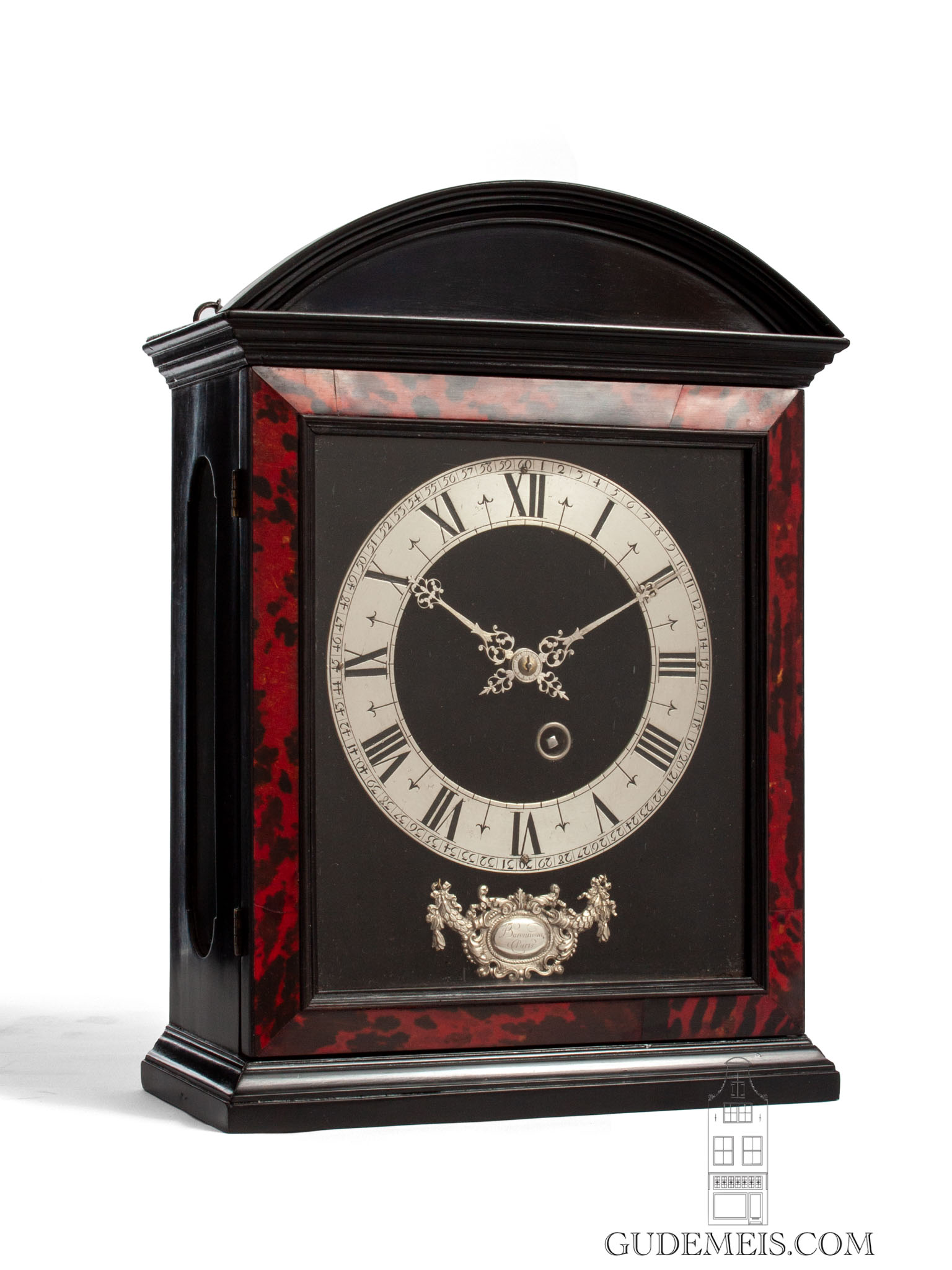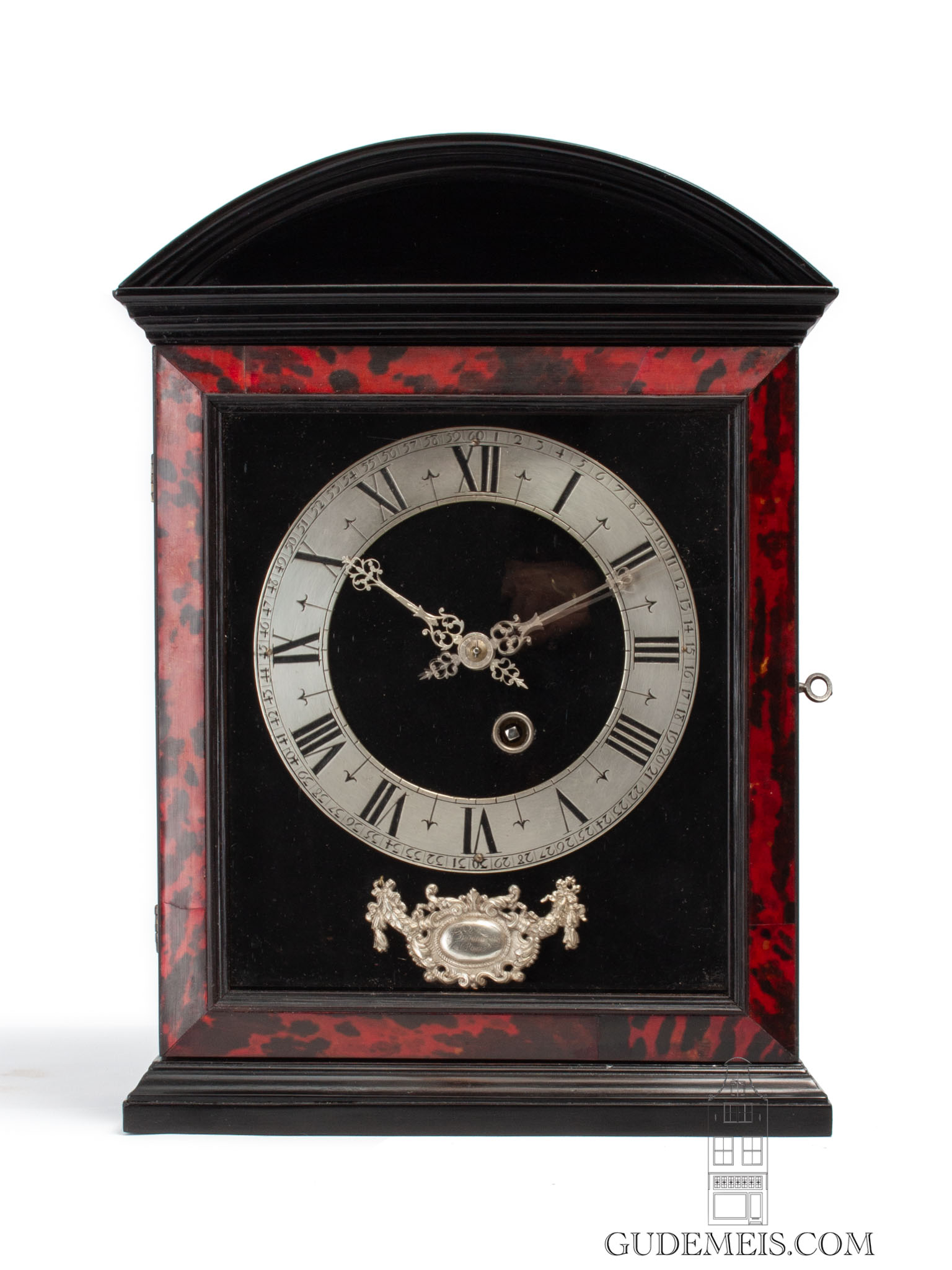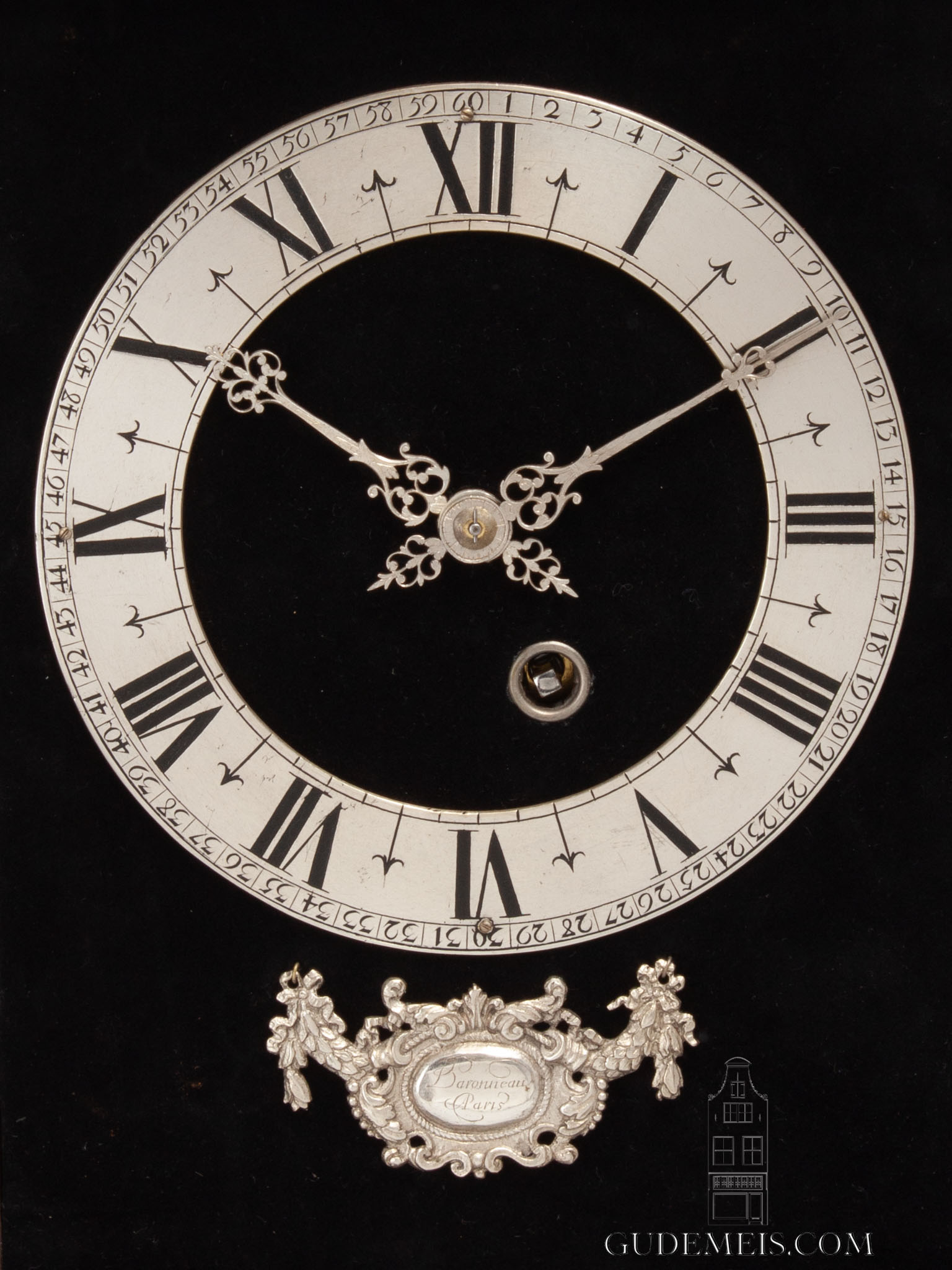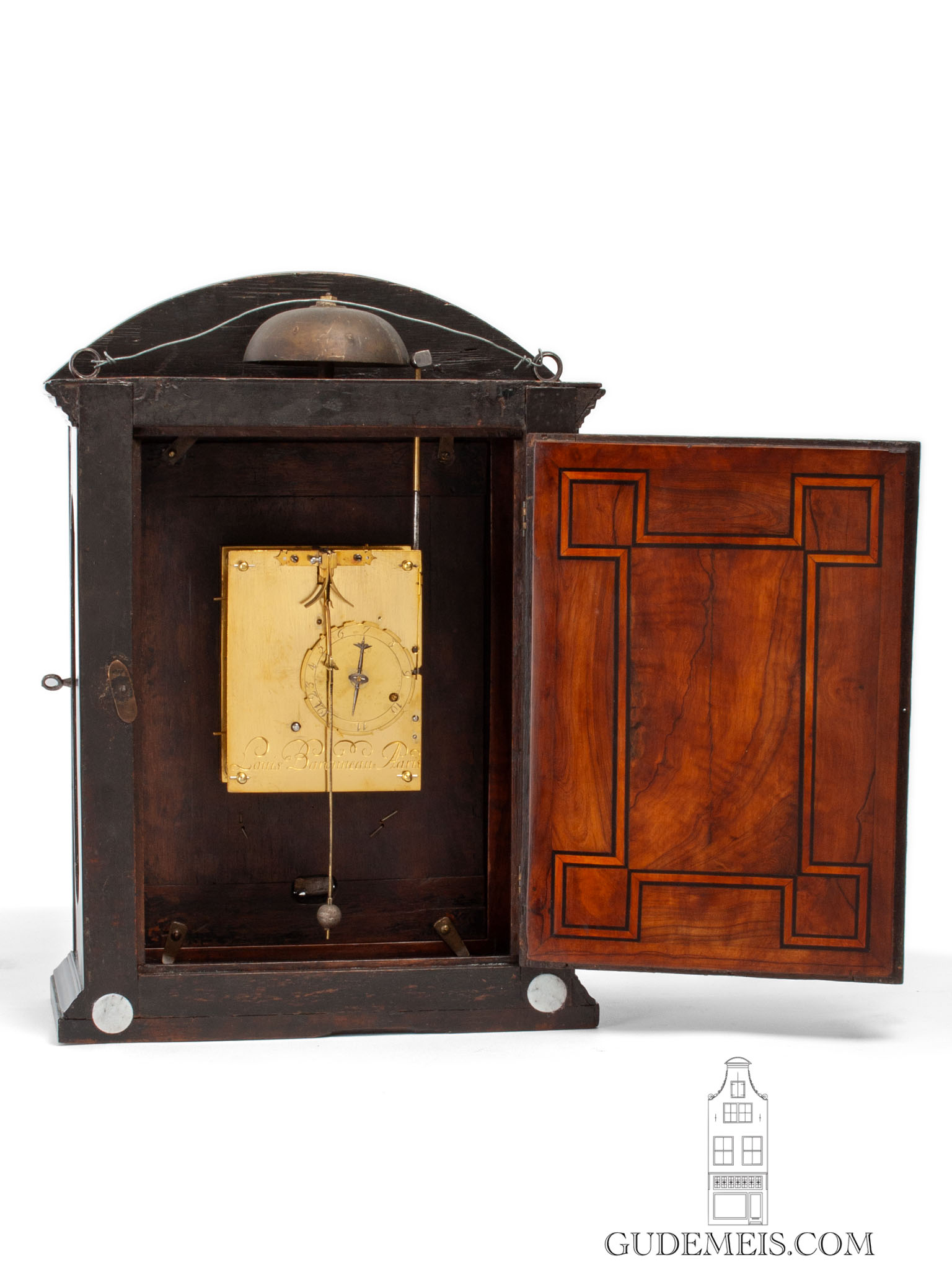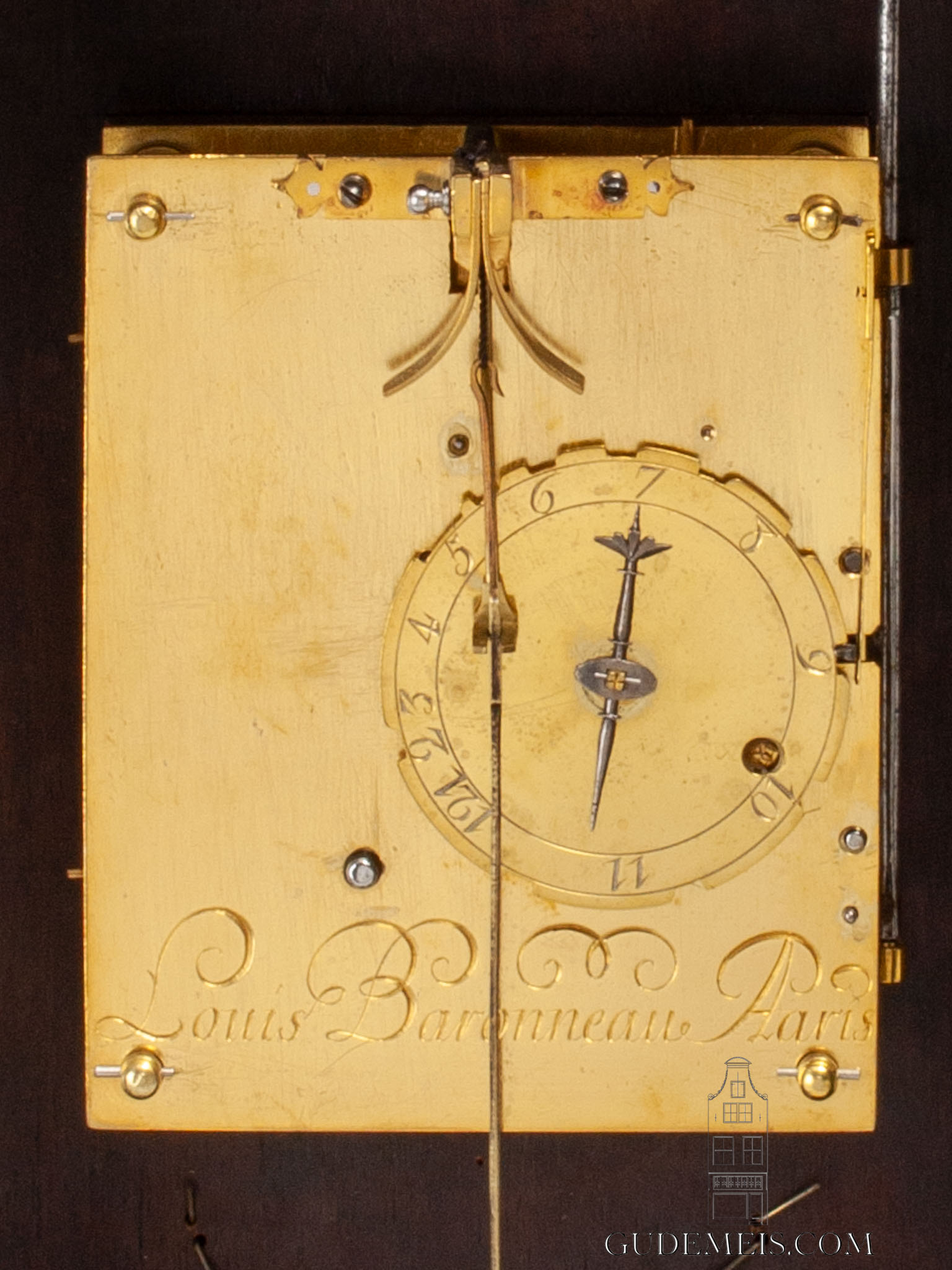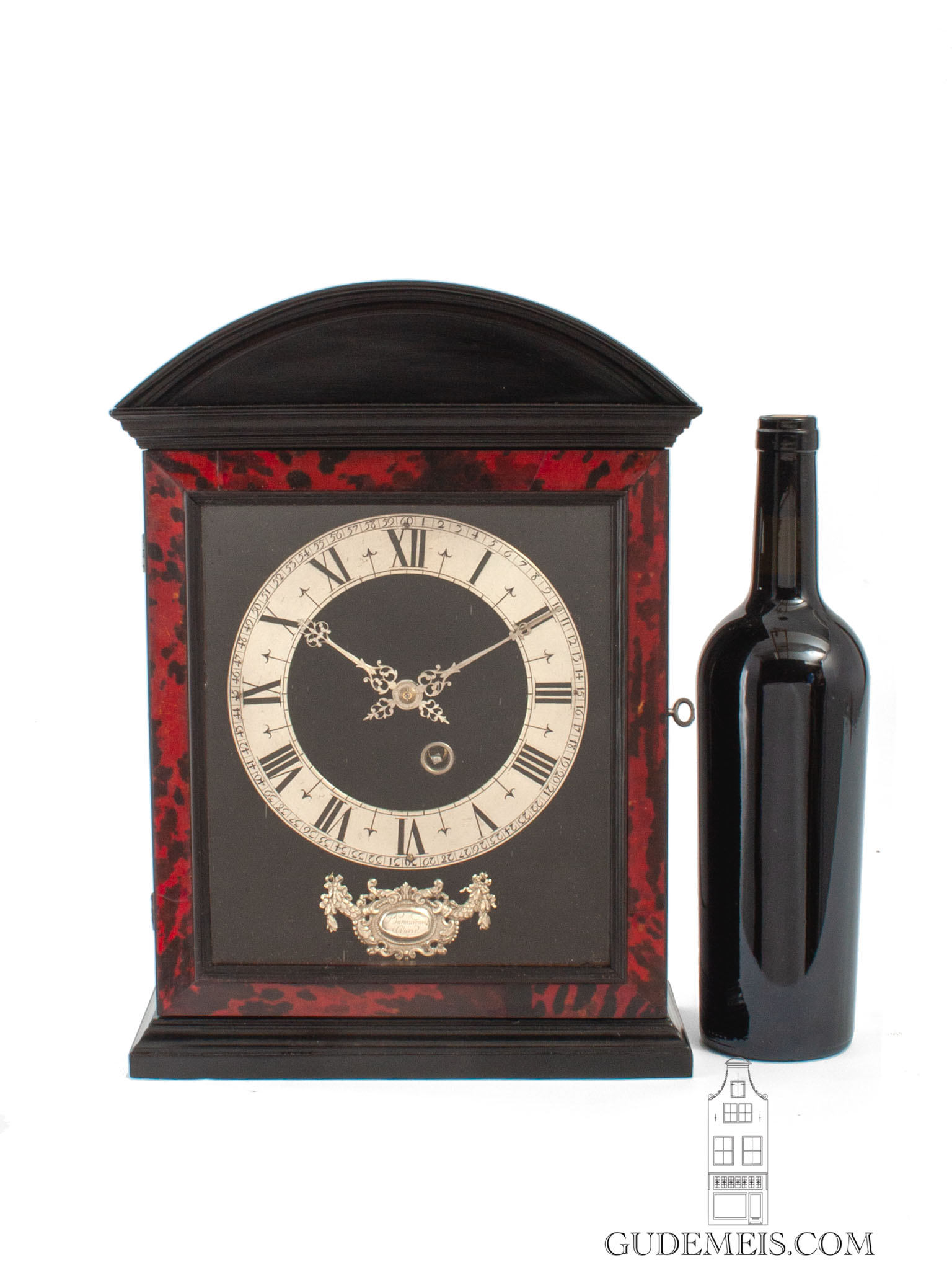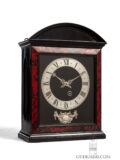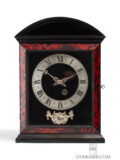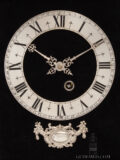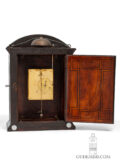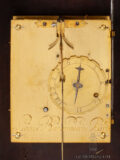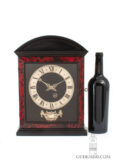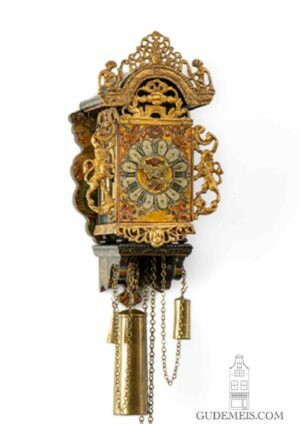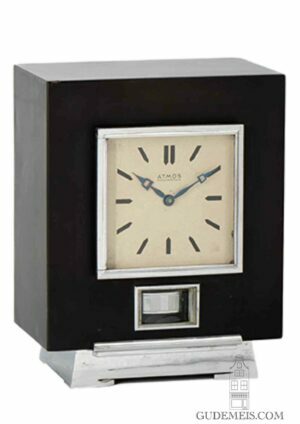An early French Louis XIV ‘pendule religieuse’ striking wall clock by Louis Baronneau, circa 1670.
Description
Pendule Religieuse
In 1656 the Dutchman Christiaan Huygens invented the pendulum movement. It increased the precision of clocks tremendously and the invention spread through Europe within a few years. In Holland these first pendulum clocks were namend ‘Hague clocks’ after the town of their invention. In France a production evolved, based on the Dutch example which is called ‘pendule religieuse’. The term has nothing to do with faith or churches. A second meaning of the word ‘Religieus’ is ‘precise’ which makes it very logical for these clocks that were much better timekeepers than the previous clocks. During the production of the Hague clocks these changed only marginally. The opposite can be said of the Religieuses. Within a few decades the appearance of these changed dramatically because the French integrated their clocks much more in their interior. This early clocks still resembles the Dutch example very much and with its simple but elegant design is not only a rare clock but a beautiful object also.
chapter ring
The dial is made of wood which is rare but not uncommon for early religieuses. It is covered with velvet upon which an engraved silvered brass chapter ring is mounted. It has Roman numerals for the hours and has full minute marking on the outer rim. The beautifully engraved and foliate pierced hands are made of silvered brass. Below the chapter ring is a hinged cast signature plate signed Baronneau A Paris. It covers a hole in the dial through which the pendulum can be starteld.
Verge escapement
The movement has a single spring barrel with double action driving both the going- and striking trains. The clock runs for more than a day on a single winding. The movement is regulated by verge escapement in combination with a silk suspended pendulum with cycloid cheeks. The clock half half hour striking by means of a numbered countwheel. The backplate is signed Louis baronneau A Paris. Typical for the movements of religieuses of this period are the baluster shaped pillars and the ornate pierced striking gates.
French Baroque
The moulded ebonised case is surmounted by an arched fronton which is inspired by Classical architecture and typical for the French Baroque. The glazed front door has canted sides which are veneered with tortoiseshell. There are glass panels to the sides and the case has a moulded base. The whole is suspended on the wall by two suspension hoops.
Louis Baronneau
Louis Baronneau becamse master clockmaker in 1653 and clokcmaker to the King and Queen in 1661. He is registered working in Rue de la Clandre in 1660. (Lit.; Tardy, Dictionnaire des Horlogers Français pp. 31.)
